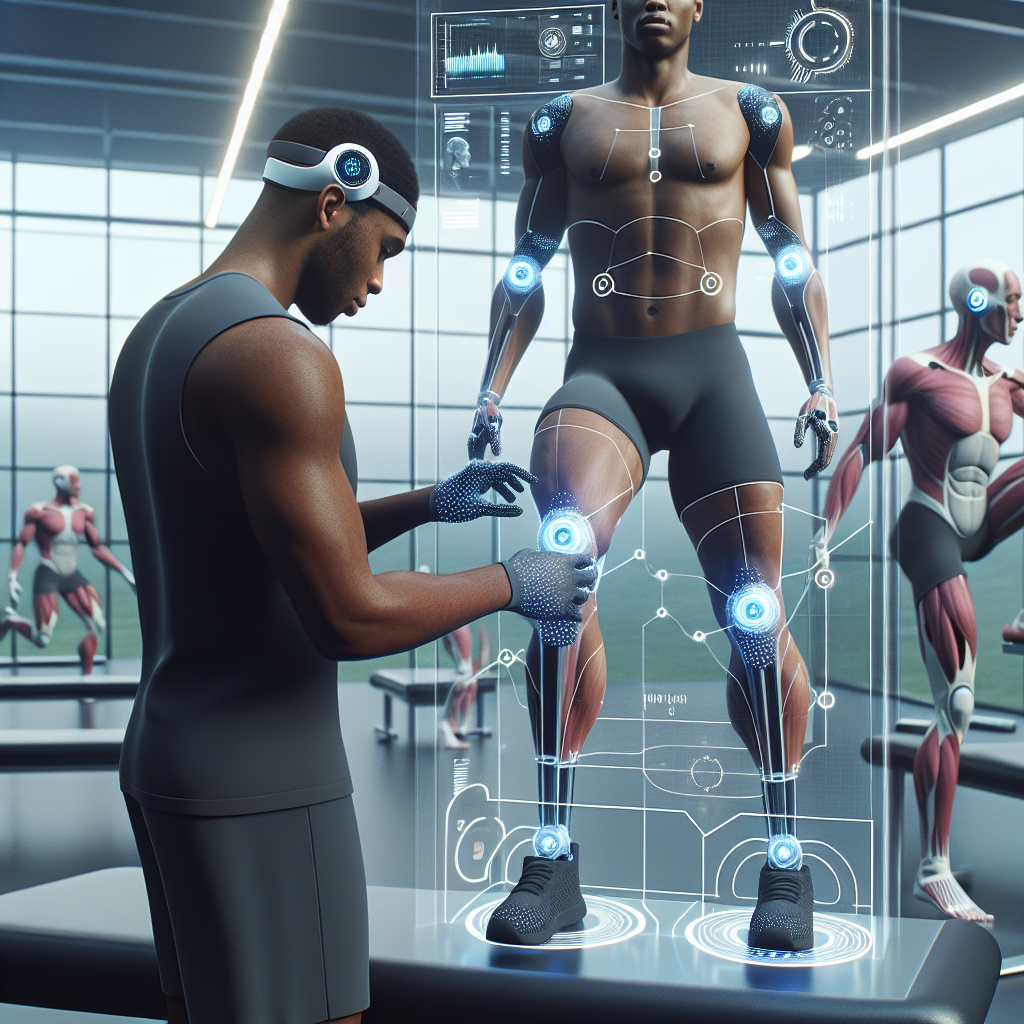Artificial intelligence (AI) is revolutionizing the field of sports injury rehabilitation, offering new and innovative ways to prevent, diagnose, and treat injuries. From personalized training programs to real-time monitoring of athletes, AI is changing the way athletes recover from injuries and get back in the game faster than ever before.
The Role of AI in Sports Injury Rehabilitation
AI is being used in a variety of ways to improve sports injury rehabilitation, including:
1. Personalized training programs: AI algorithms can analyze an athlete’s movement patterns and biomechanics to create personalized training programs that target areas of weakness and help prevent future injuries. By using data collected from sensors and wearable devices, AI can provide athletes with real-time feedback on their performance and suggest modifications to their training routine.
2. Injury prevention: AI can help identify potential risk factors for injuries by analyzing data collected from various sources, such as video footage, medical records, and performance metrics. By identifying patterns and trends in the data, AI algorithms can predict when an athlete is at risk of injury and recommend strategies to prevent it from happening.
3. Rehabilitation exercises: AI-powered rehabilitation exercises can provide athletes with personalized workouts that target specific muscle groups and improve mobility and strength. By using motion capture technology and machine learning algorithms, AI can monitor an athlete’s progress and adjust the exercises accordingly to ensure optimal recovery.
4. Real-time monitoring: AI can track an athlete’s progress in real-time and provide feedback on their performance, allowing coaches and medical professionals to make informed decisions about their rehabilitation program. By analyzing data from wearable devices and sensors, AI can detect changes in an athlete’s movement patterns and alert the medical team if any issues arise.
5. Virtual reality therapy: AI-powered virtual reality therapy can help athletes recover from injuries faster by providing immersive and interactive rehabilitation exercises. By simulating real-life scenarios and environments, virtual reality therapy can help athletes regain strength and mobility while reducing pain and discomfort.
FAQs
Q: How does AI help prevent sports injuries?
A: AI can help prevent sports injuries by analyzing data collected from various sources, such as video footage, medical records, and performance metrics. By identifying patterns and trends in the data, AI algorithms can predict when an athlete is at risk of injury and recommend strategies to prevent it from happening.
Q: Can AI provide personalized training programs for athletes?
A: Yes, AI algorithms can analyze an athlete’s movement patterns and biomechanics to create personalized training programs that target areas of weakness and help prevent future injuries. By using data collected from sensors and wearable devices, AI can provide athletes with real-time feedback on their performance and suggest modifications to their training routine.
Q: How does AI monitor an athlete’s progress in real-time?
A: AI can track an athlete’s progress in real-time by analyzing data from wearable devices and sensors. By monitoring an athlete’s movement patterns and performance metrics, AI can provide feedback on their progress and alert the medical team if any issues arise.
Q: Are there any limitations to using AI in sports injury rehabilitation?
A: While AI has the potential to revolutionize sports injury rehabilitation, there are some limitations to consider. For example, AI algorithms rely on accurate data to make informed decisions, so it’s important to ensure that the data collected is reliable and up-to-date. Additionally, AI technology is still evolving, so there may be challenges in implementing AI solutions in a sports rehabilitation setting.
In conclusion, AI is playing a crucial role in sports injury rehabilitation by providing personalized training programs, preventing injuries, and monitoring athletes’ progress in real-time. By harnessing the power of AI technology, athletes can recover from injuries faster and get back in the game stronger than ever before. As AI continues to advance, we can expect to see even more innovative solutions that will further improve sports injury rehabilitation and help athletes reach their full potential.

